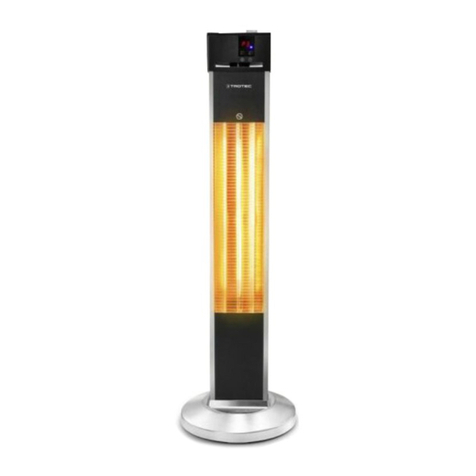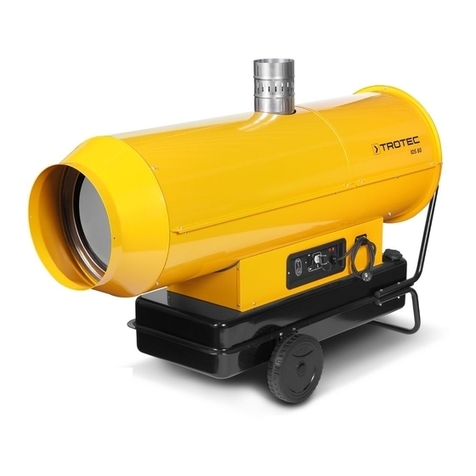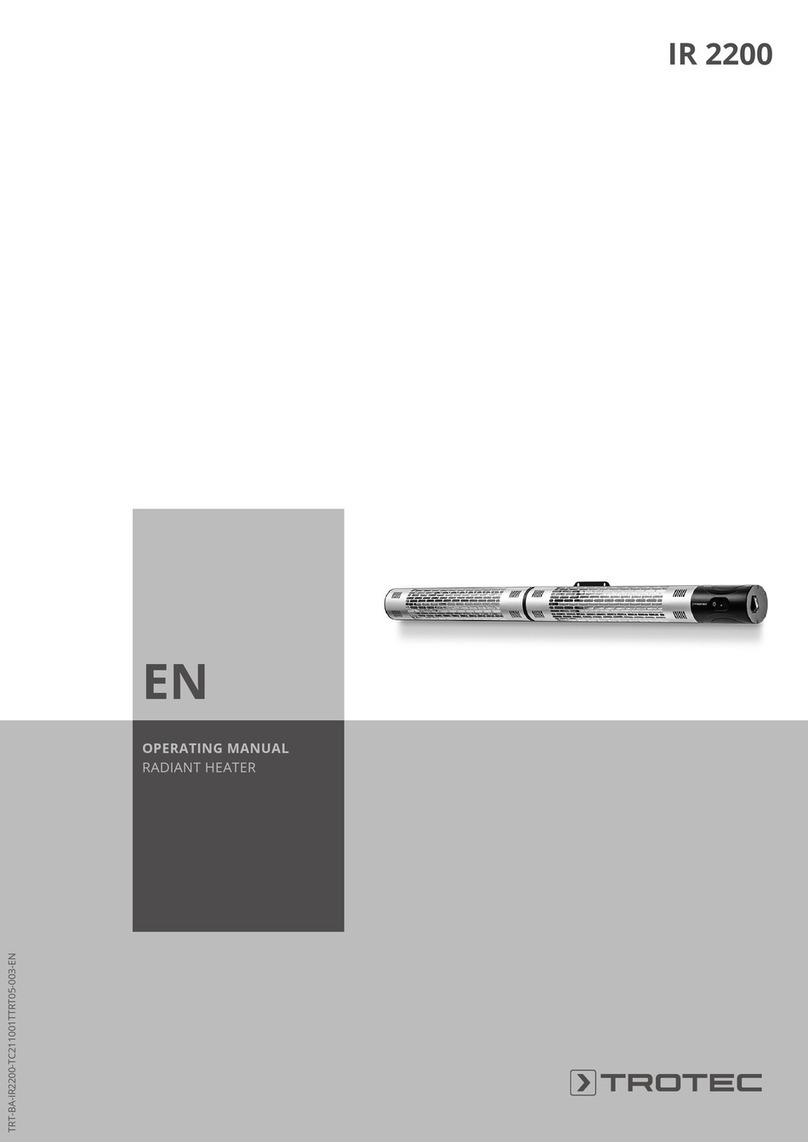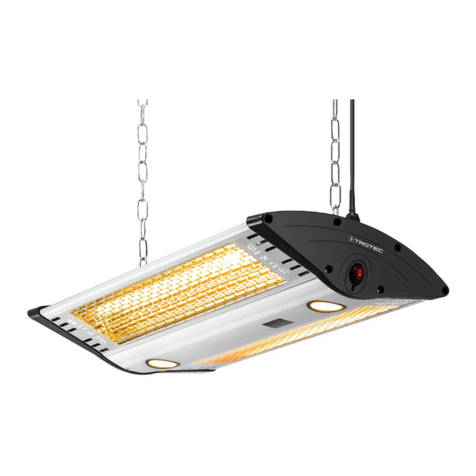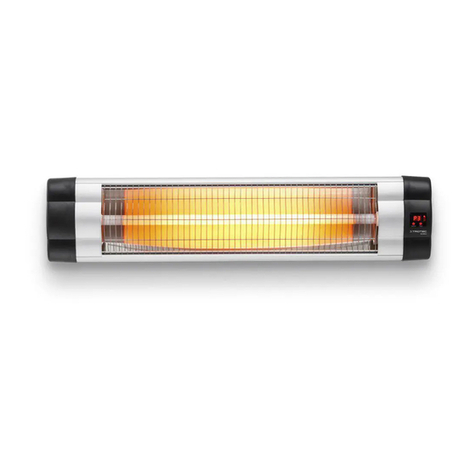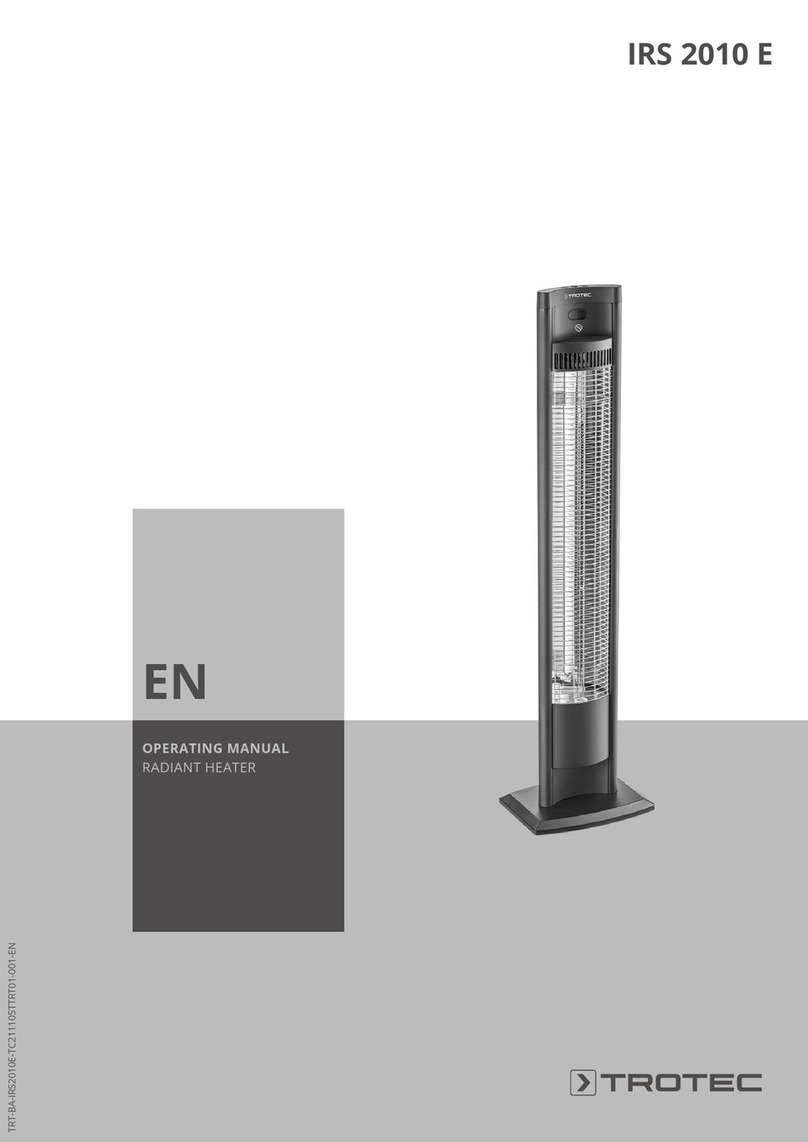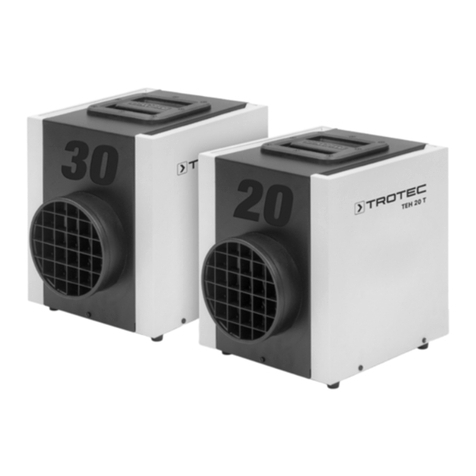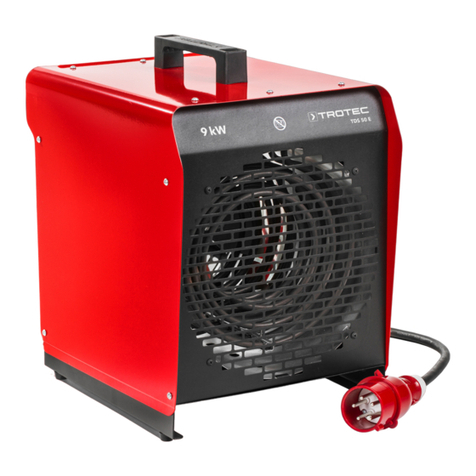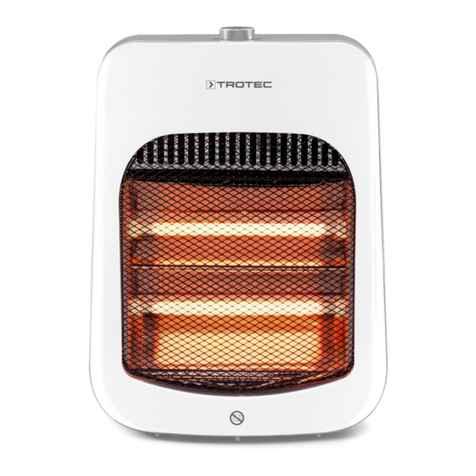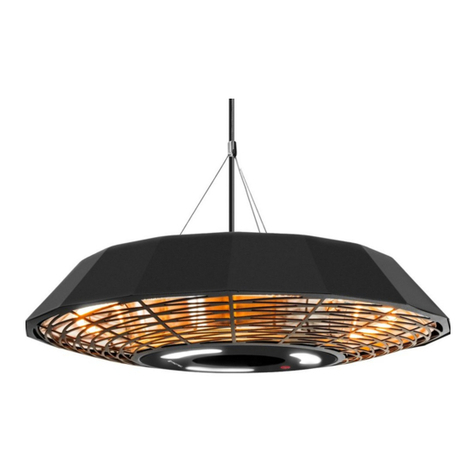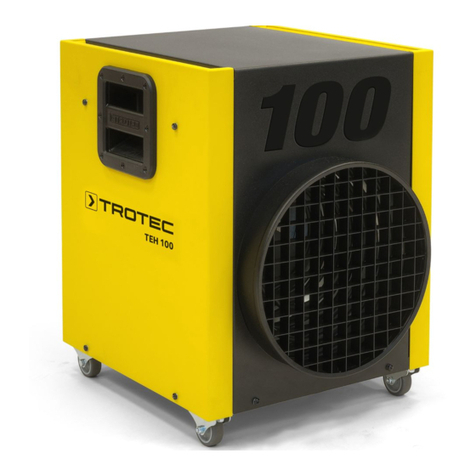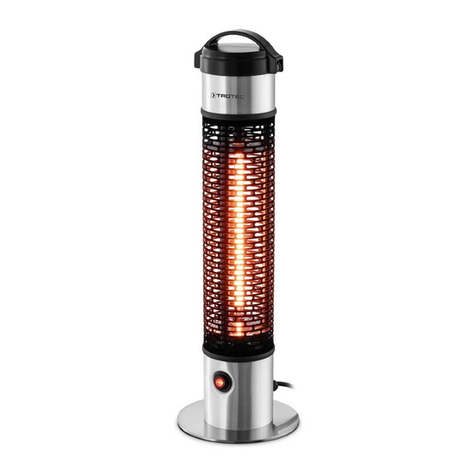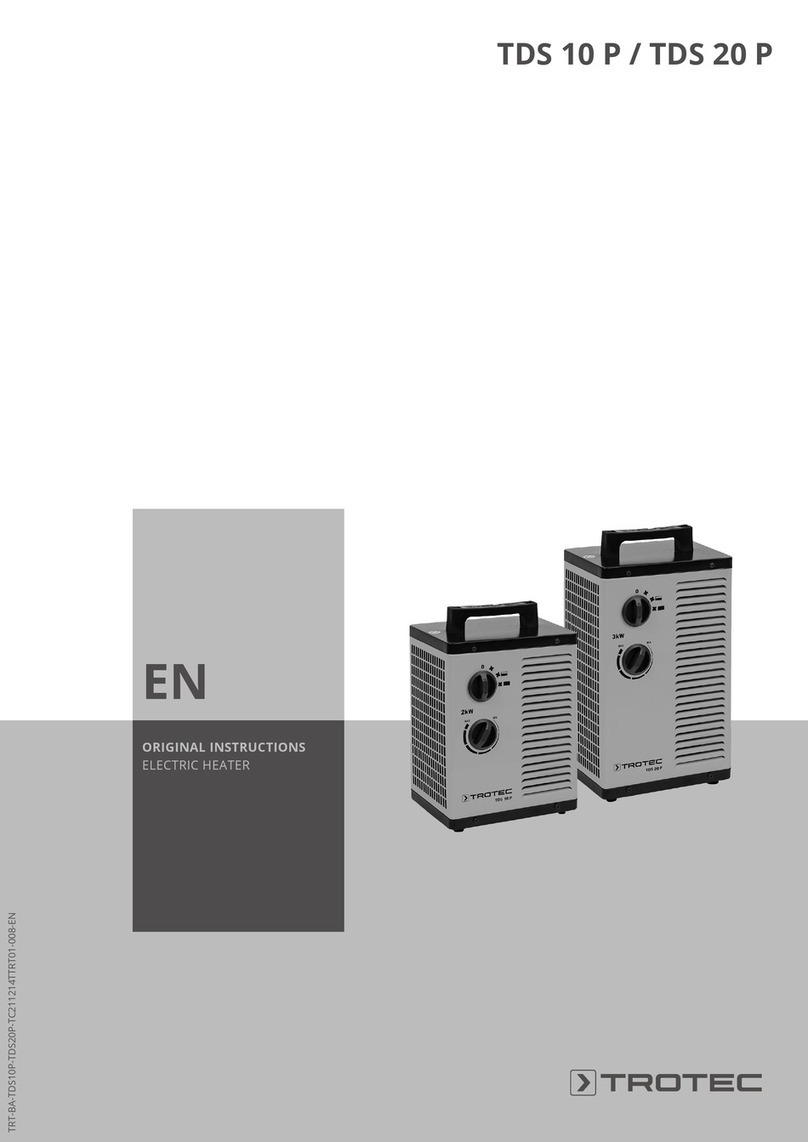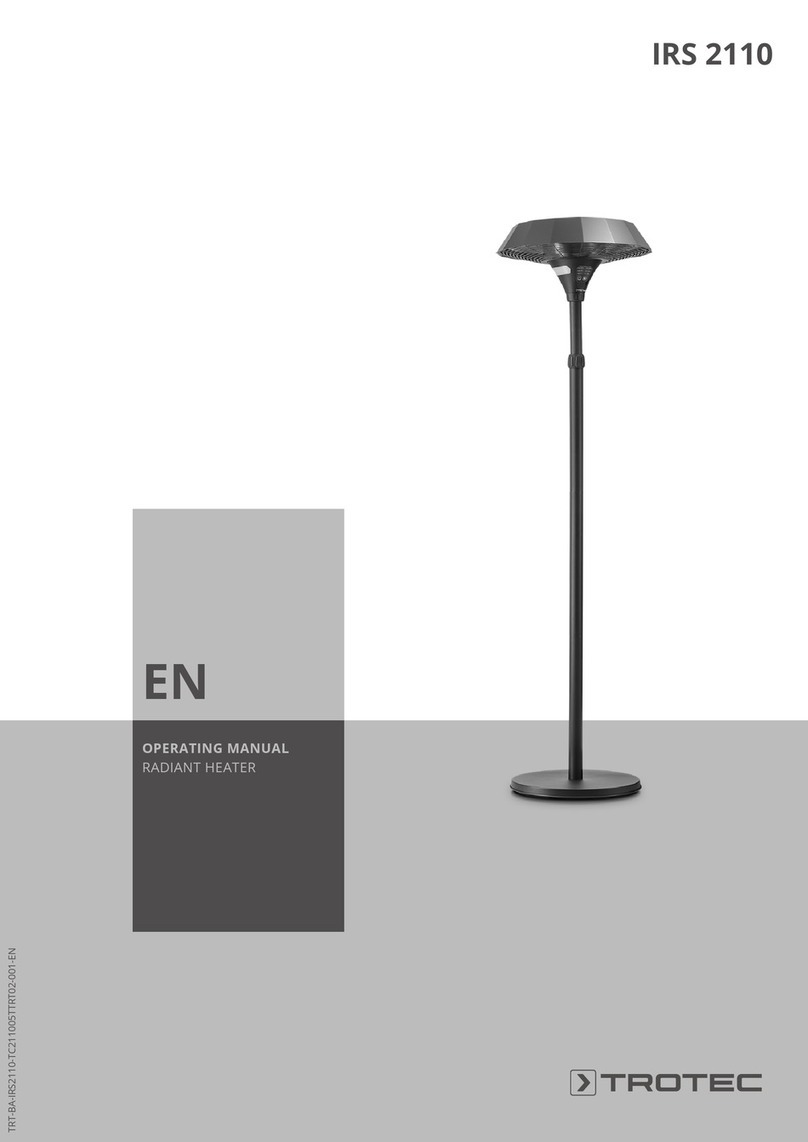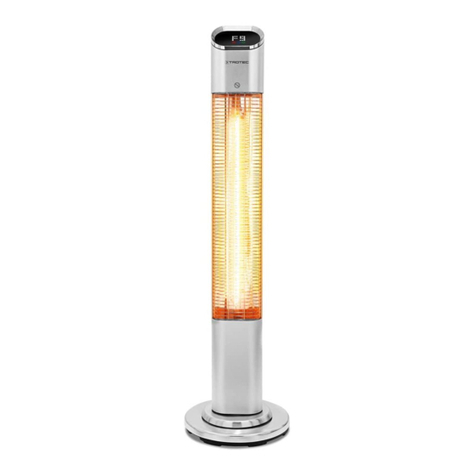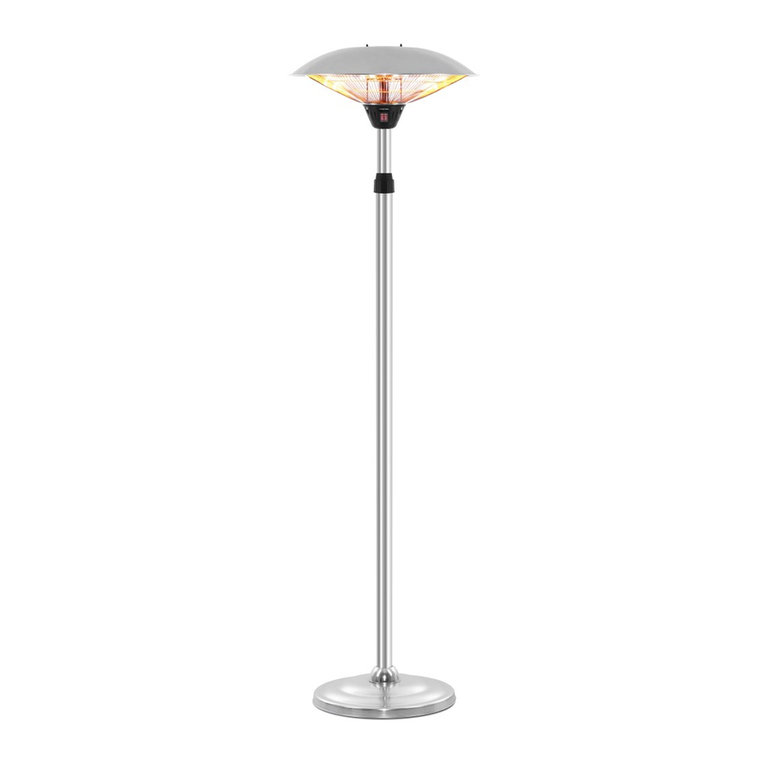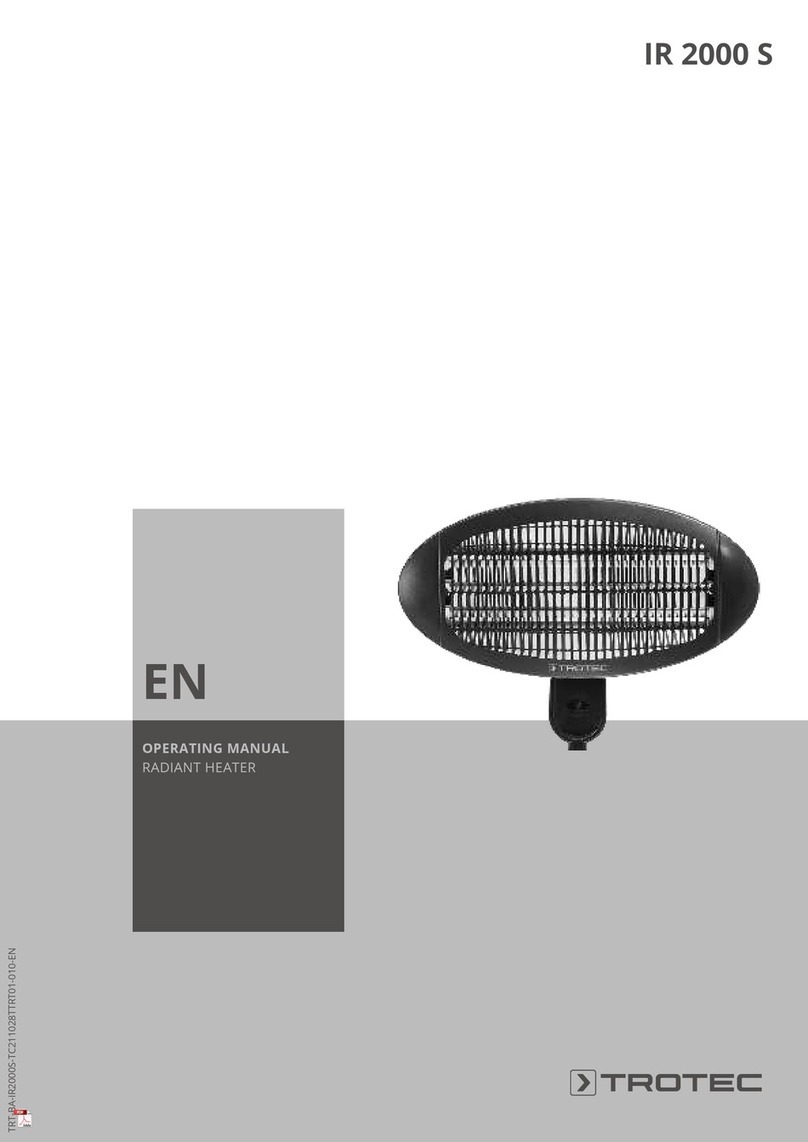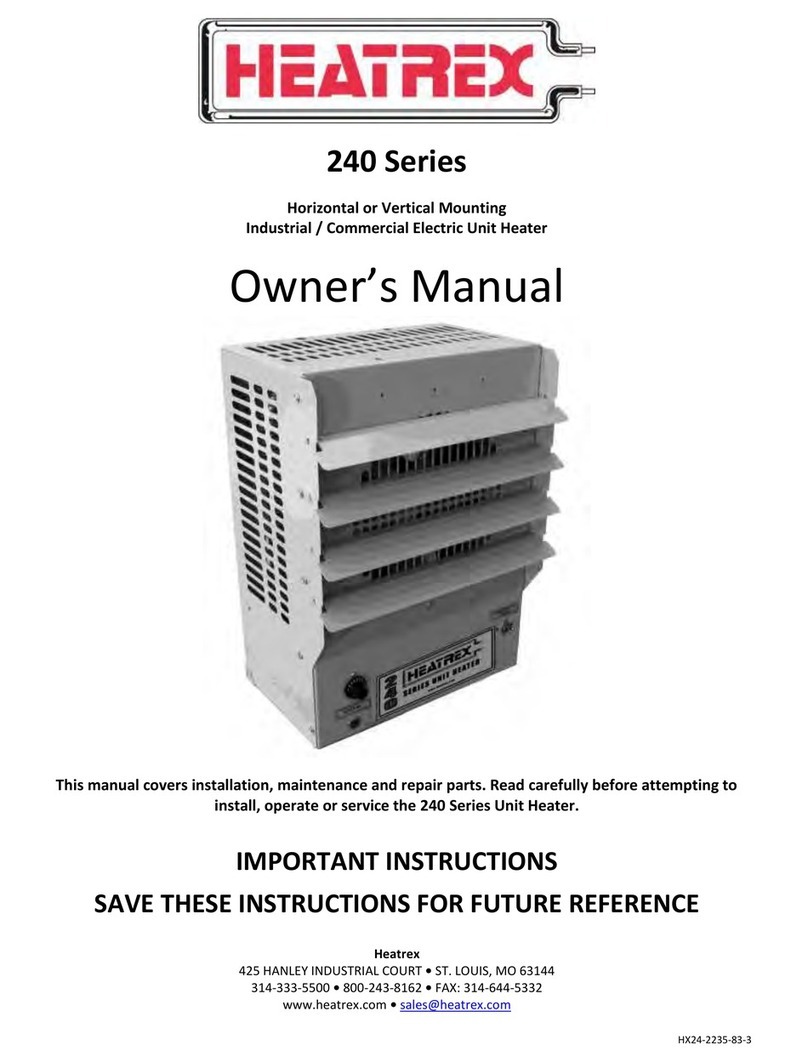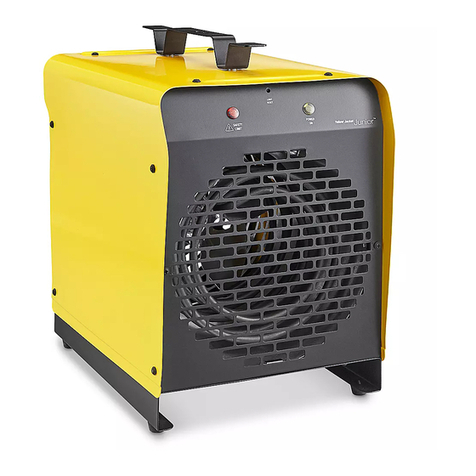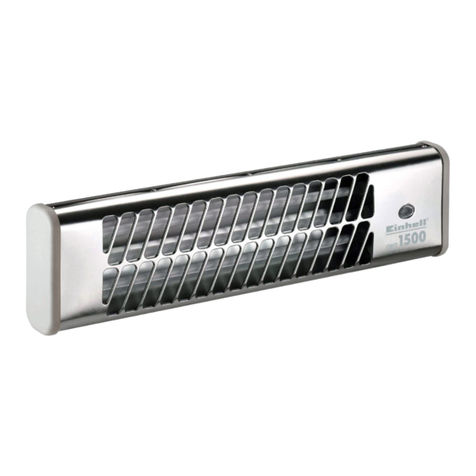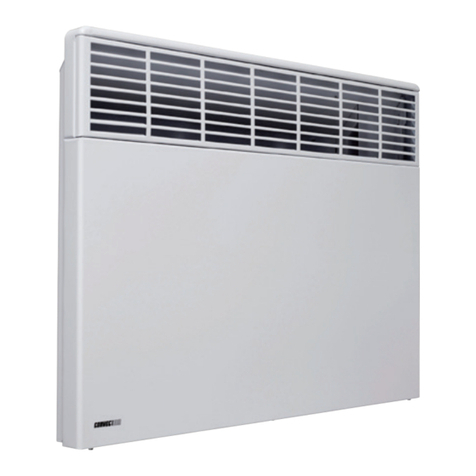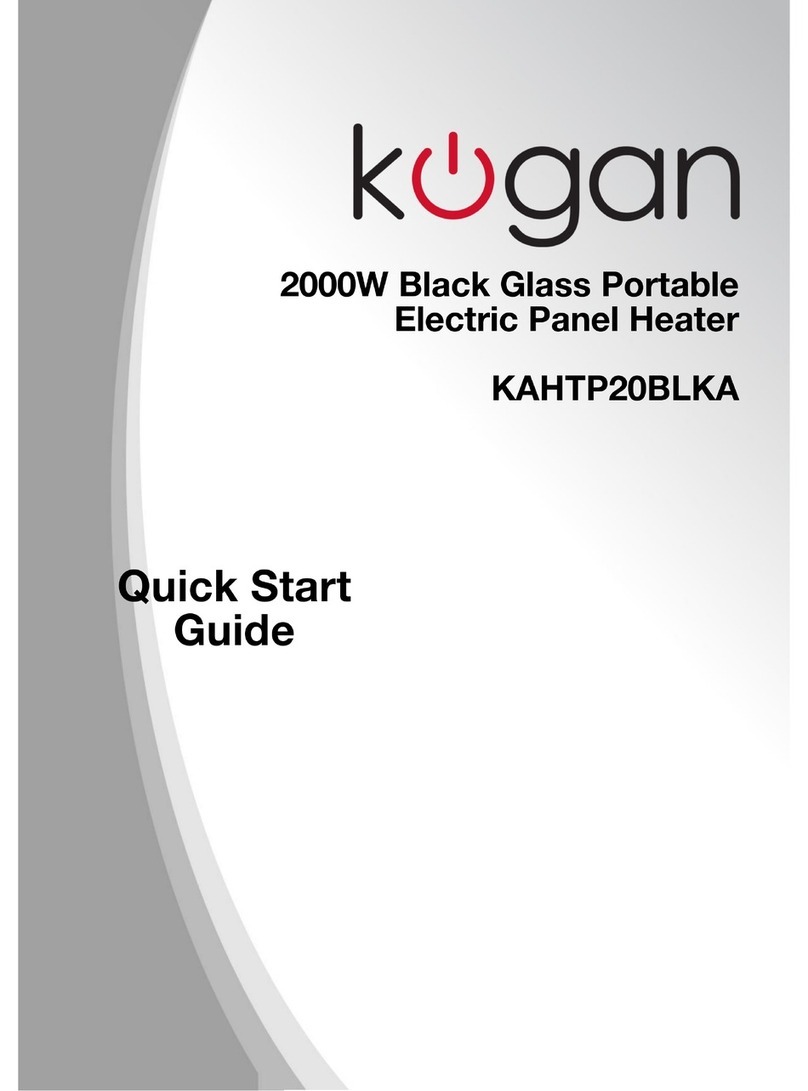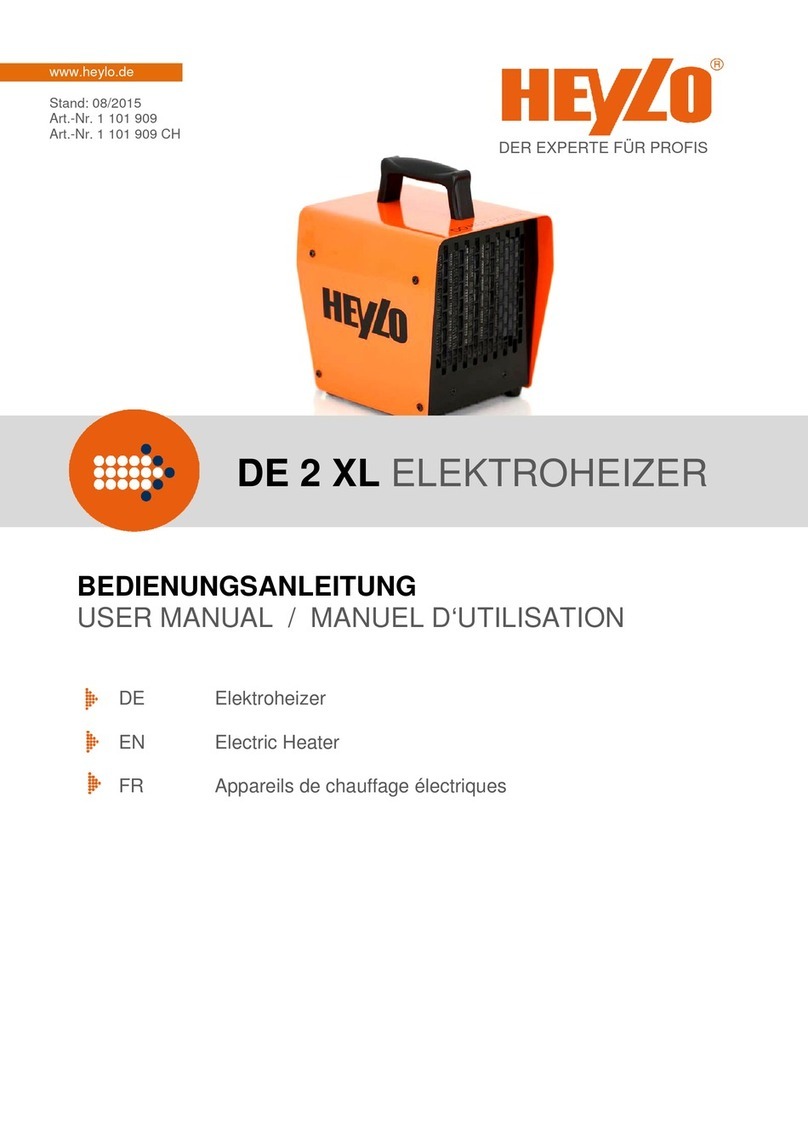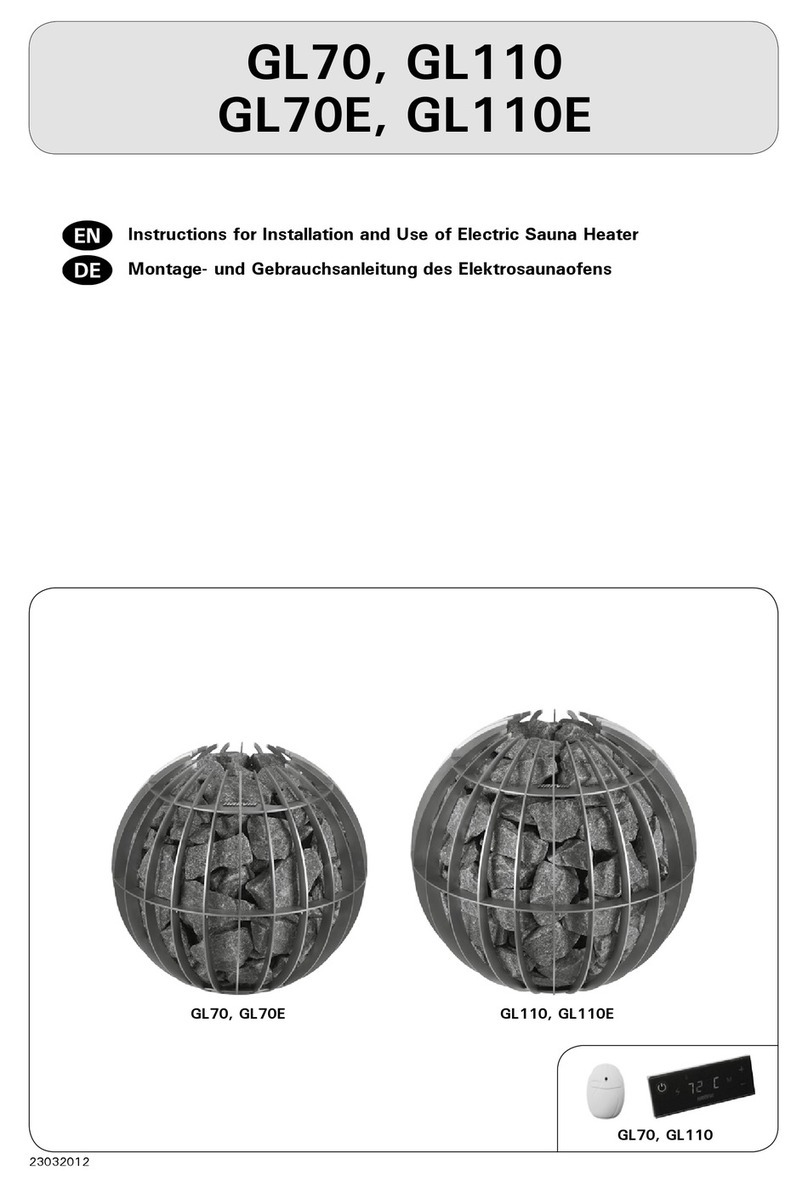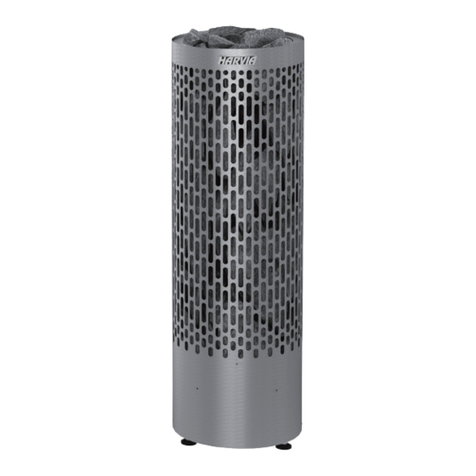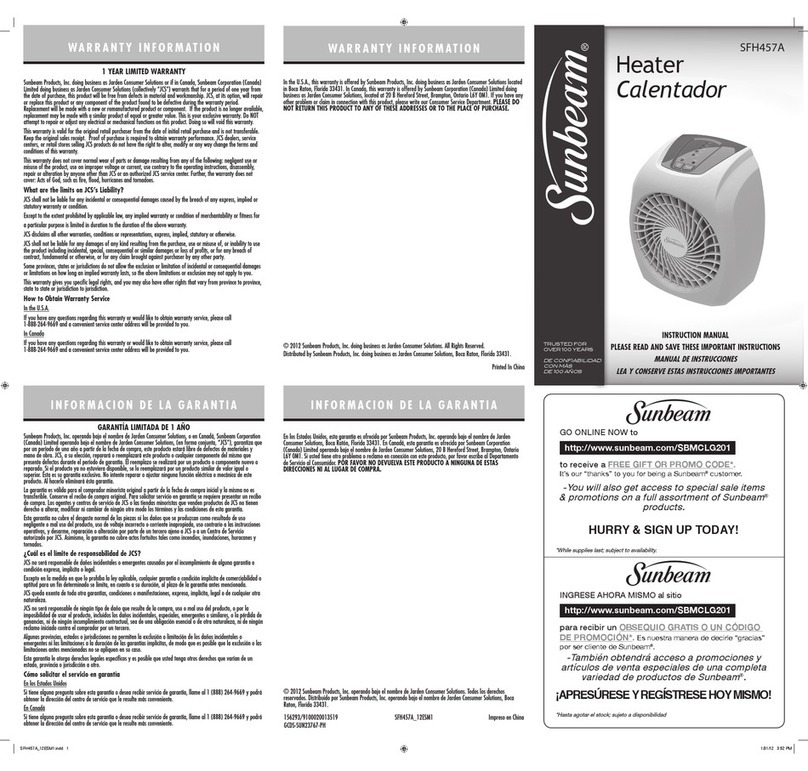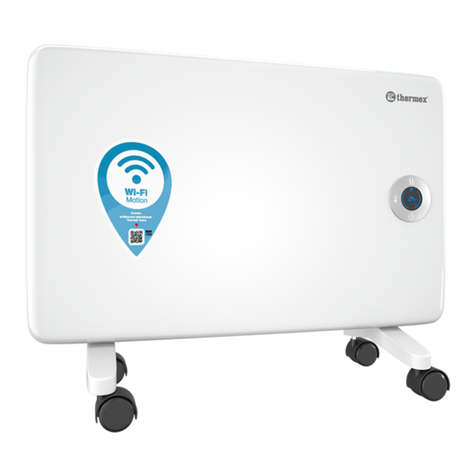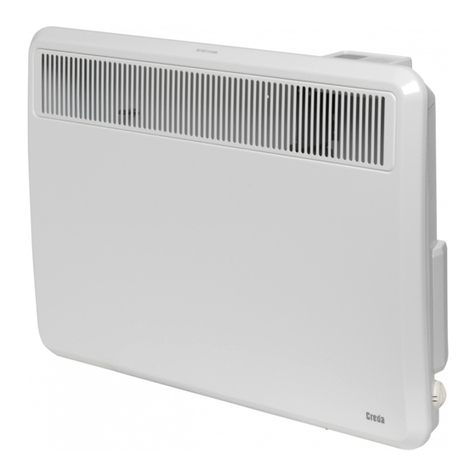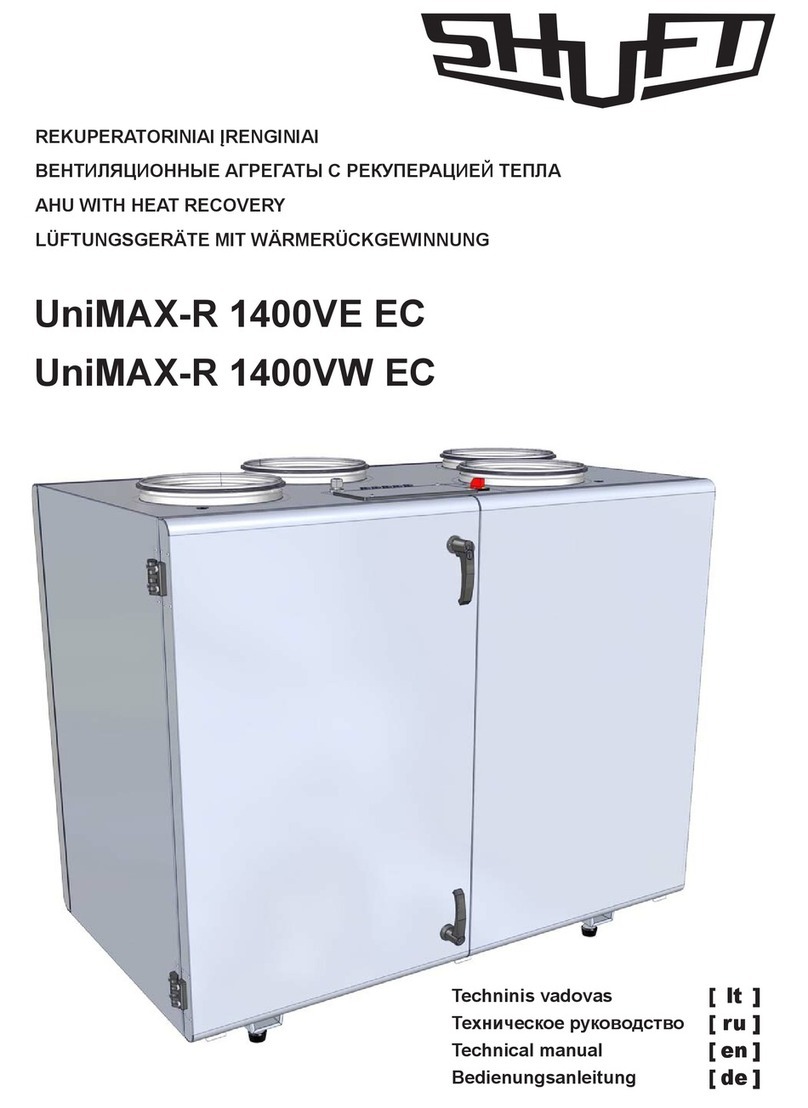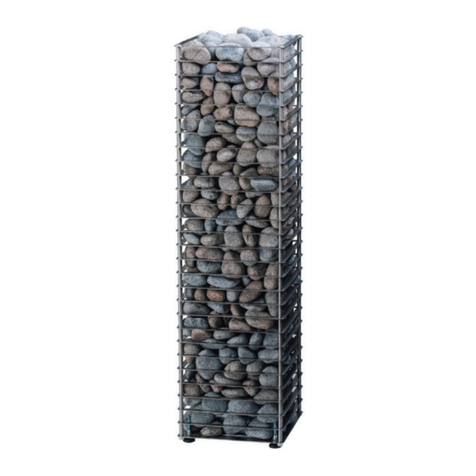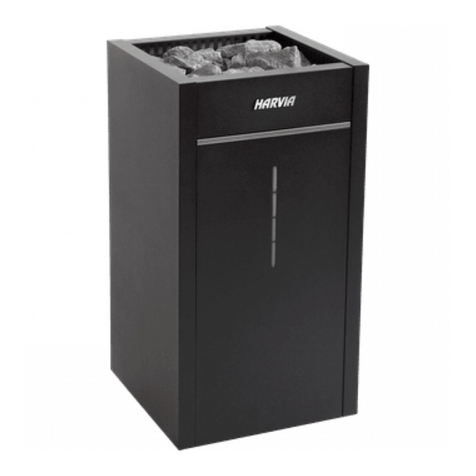Bedienungsanleitung – Elektroheizer TEH 20 T / 30 T
A-4 DE
Erhöhung der Temperatur: Regler nach oben drehen. Absenken der Temperatur: Regler nach unten drehen. Die Regulierung kann während des laufenden Betriebs erfolgen. Wird die eingestellte Raumtemperatur erreicht, schaltet das Gerät auto-matisch ab. Die Kontrollanzeige (2) erlischt.Fällt die Raumtemperatur unter den eingestellten Wert, nimmt das Gerät den Heizbetrieb wieder auf. Die Kontrollanzeige beginnt rot zu leuchten.
11. Installation und Inbetriebnahme
Gefahr!
Verletzungsgefahr durch unsachgemäße Bedie-
nung.
Das Gerät darf nur von Personen betrieben werden, die in der Bedienung des Gerätes unterwiesen worden sind. Bei der Aufstellung und Inbetriebnahme gehen Sie wie folgt vor: Überprüfen Sie die Vollständigkeit des Lieferumfangs Ihres Elekt-roheizers . Bei Fehlen eines Zubehörteils wenden Sie sich bitte an den Kundendienst von Trotec oder an den Fachhändler, bei dem Sie das Gerät erworben haben. Überprüfen Sie das Gerät und deren Anschlussteile auf mögliche Beschädigungen. Überprüfen Sie das Gerät vor jeder Inbetrieb-nahme und kontrollieren Sie es während der Verwendung regel-mäßig auf seinen ordnungsgemäßen Zustand. Warnung!
Verletzungsgefahr durch beschädigte Gerä-
te.
Verwenden Sie niemals beschädigte Geräte bzw. Geräteteile.Lassen Sie den Elektroheizer im Falle einer Be-schädigung vor der Inbetriebnahme in jedem Fall von einer Fachfirma reparieren. Beachten Sie die im Kapitel Aufstellungsbedingungen be-schriebenen Voraussetzungen. Stellen Sie sicher, dass die Merkmale des verwendeten Strom-netzes denen auf dem Geräteschild bzw. den Angaben im Kapitel Technische Daten entsprechen. Vergewissern Sie sich vor jedem Einschalten des Gerätes, dass sich der Ventilator frei bewegen kann. Kleinere Fremdkörper, die sich im Rotationsbereich des Lüfters befinden, können un-ter Zuhilfenahme von Druckluft entfernt werden. Bei größeren Störungen wenden Sie sich in jedem Fall an eine Fachwerkstatt. Beachten Sie zwingend die im Kapitel Wartung und Reinigung gemachten Angaben. Eine Demontage bzw. Reparatur des Ge-rätes darf ausschließlich durch qualifizierte Techniker erfolgen! Schließen Sie das Stromversorgungskabel an eine ordnungsge-mäß abgesicherte Netzsteckdose (230 V / 50 Hz /16 A) an. Auf Baustellen muss gemäß VDE 0100/0105 der Steckdose ein FI-Schalter (RCD) vorgeschaltet sein. Der Elektroheizer ist nun betriebsbereit. Nutzen Sie das Gerät entspre-chend den im Kapitel Funktionen und Bedienung beschriebenen Funk-tionen. 12. Transport und Lagerung
Transport
Schalten Sie das Gerät ab, wie im Kapitel Funktionen und Be-dienung beschrieben. Warten Sie bis das Gerät abgekühlt ist. Transportieren Sie den Elektroheizer, indem Sie ihn an den kons-truktiv dafür vorgesehenen Tragegriffen (3) anfassen. Sichern Sie das Gerät während des Transportes mit einem Fahr-zeug gegen Erschütterung und Verrutschen . Lagerung
Wird der Elektroheizer über einen längeren Zeitraum nicht genutzt, muss er so gelagert werden, dass keine Gefahr für Personen und Sachen be-steht sowie keine Beschädigungen am Gerät auftreten können. Zu be-achten sind insbesondere folgende Aspekte: Trennen Sie das Gerät von der Stromversorgung. Wählen Sie einen Lagerungsort, der möglichst frei von Staub ist, um eine übermäßige Verschmutzung zu vermeiden. Decken Sie das Gerät ab. Lagern Sie den TEH 20 T bzw. 30 T so, dass keine Feuchtigkeit (z.B. Schnee, Regen) in das Innere des Gerätes, insbesondere in die elektrischen Baugruppen, eindringen kann. Lagern Sie das Gerät vor allgemeinen Wettereinflüssen (z.B. Sturm) geschützt. Sichern Sie das Gerät bei erhöhter Lagerung gegen Herunterfal-len, so dass eine Gefahr für Personen sowie eine Beschädigung des Gerätes ausgeschlossen sind.
13. Wartung und Reinigung
Für den einwandfreien Betrieb sollten Sie den Elektroheizer regelmäßig warten und reinigen.Gefahr!
Verletzungsgefahr
Trennen das Gerät von der Stromversorgung, bevor Sie mit den Reinigungs- bzw. Wartungsarbeiten beginnen. Gefahr!
Lebensgefahr durch unsachgemäße Reparatur
Versuchen Sie niemals Veränderungen am Gerät oder Reparaturen durchzuführen. Eigenmächtige Verände-rungen können zu schweren Verletzungen oder Tod füh-ren. Lassen Sie Reparaturen nur von einer zertifizierten Fachwerkstatt ausführen. Wartung des Elektroheizers
Überprüfen Sie alle elektrischen Verbindungen und Anschlüsse auf Beschädigungen. Lassen Sie beschädigte Baugruppen vor der nächsten Inbetriebnahme stets reparieren! Prüfen Sie das Gehäuse, die Abdeckungen und alle Verbindungs-stellen auf ihren ordnungsgemäßen Zustand. Achten Sie während des Betriebs stets auf ungewöhnliche Ge-räusche. Sie können u.a. auf Beschädigungen der Gebläseeinheit
